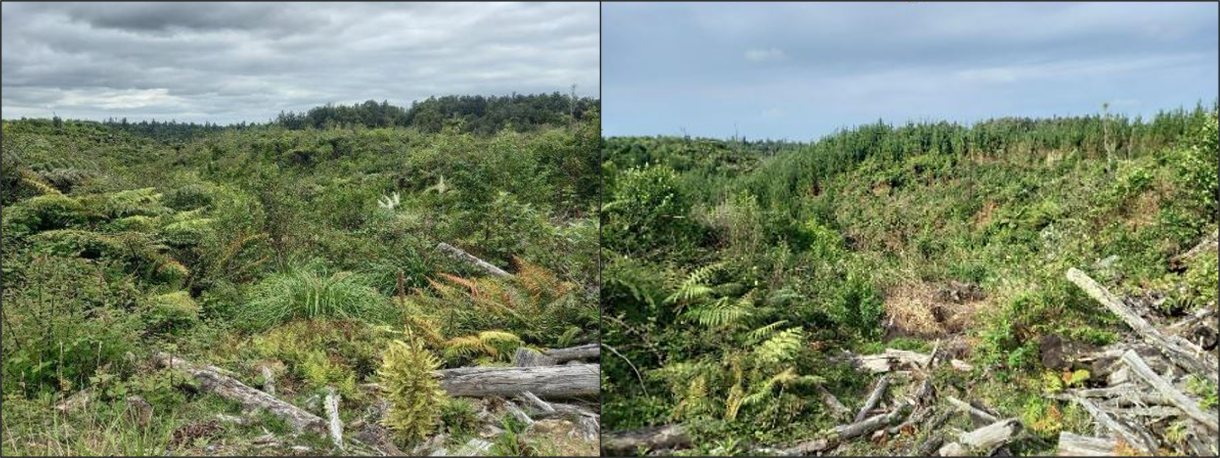December 2023
The Kaharoa Kōkako Trust strives to ensure long-term protection and survival of kōkako and other indigenous flora and fauna in the Kaharoa Conservation Area (KCA).
With almost 1000 ha of rewarewa dominated forest, including a mosaic of regenerating kamahi-tawa-tanekaha-podocarp-makomako scrub and forest - the work to enhance indigenous biodiversity and ecosystem health is relentless.
While the challenge of managing the many predators and ungulates is well known, invasive plant species are also a silent threat.
In 2021, a 22 ha block of regenerating indigenous forest in the middle of the KCA was becoming dominated by regenerating radiata pine, ranging in size from seedlings up to ~4 m tall trees. It was clear that without management action, this entire block would transition to a dense radiata pine forest.

Progress photos of wildings controlled in the Kaharoa Conservation area
Such an outcome would not only compromise the inherent conservation values of the KCA but would also create a large seed source that would likely cause further encroachment of pines into the surrounding indigenous forest wherever disturbance events created canopy gaps.
Dealing with a problem of this scale was beyond the immediate capacity of KKT’s trustees and volunteers but this is where the National Wilding Conifer Control Programme (NWCCP) came to KKT’s aid. An application for funding through the National Wilding Conifer Control Programme Community Partnership Project Fund was successful and in October 2021, BioVision (contractors) commenced work to control the radiata pine through manual felling.
It soon became clear the amount of work involved in clearing the pines had been underestimated, primarily due to high levels of hindrance from thick blackberry coupled with the challenging topography. Fortunately, the Bay of Plenty Regional Council were able to contribute further support to complete the clearance.
Inevitably, some conifers were missed in the year 1 efforts, but the project had allowed for a second year of control. This time a helicopter was used to spot spray the scattered radiata pine emerging from the regenerating indigenous shrubs and trees.
As a result of these efforts, the pines have been successfully removed from the affected 22 ha and the indigenous vegetation is free to grow.
KKT is grateful to, and would like to acknowledge and thank, all the organisations that contributed to this great result, including:
More about Kaharoa Kōkako Trust at kokako.org.nz